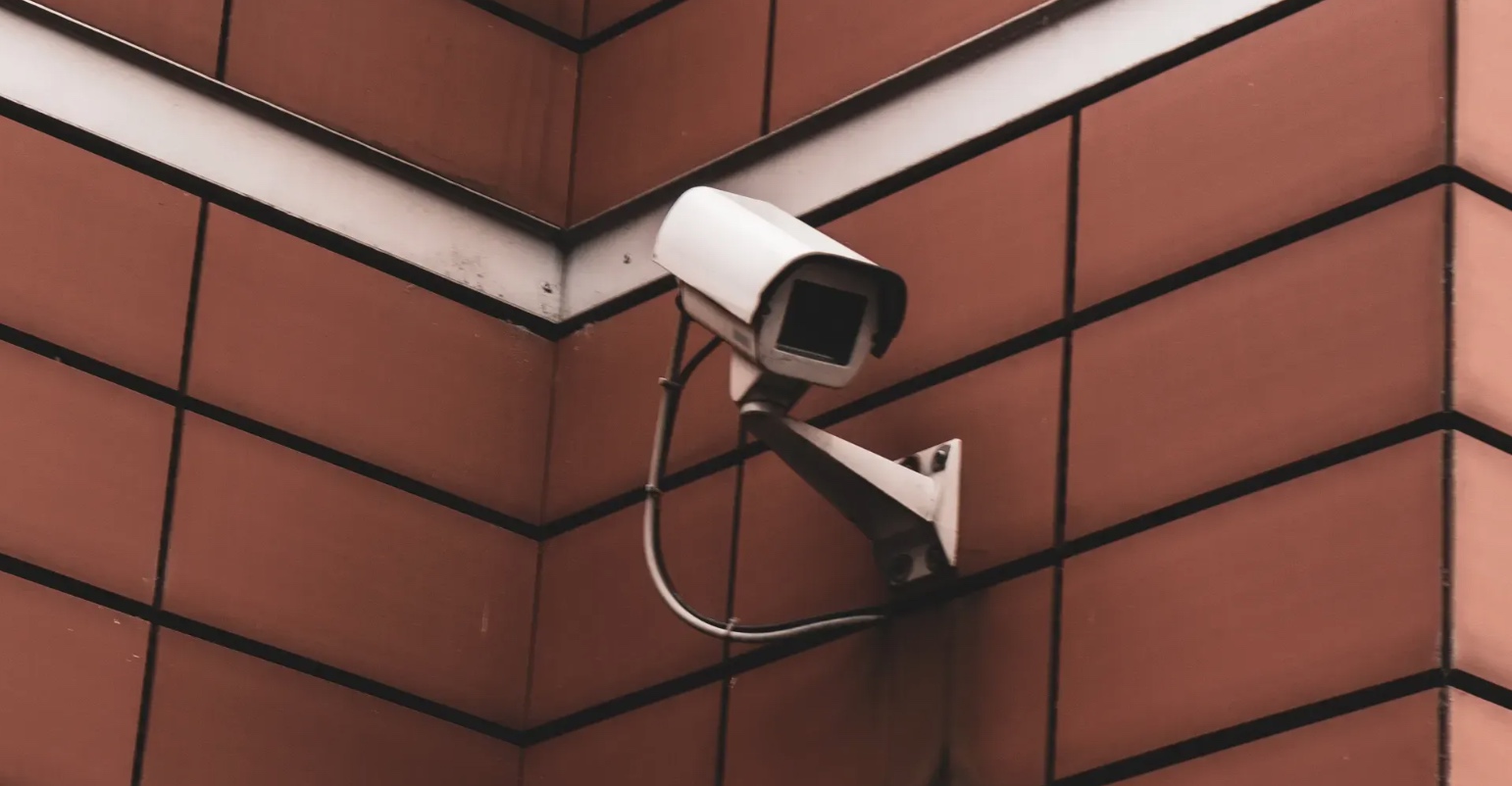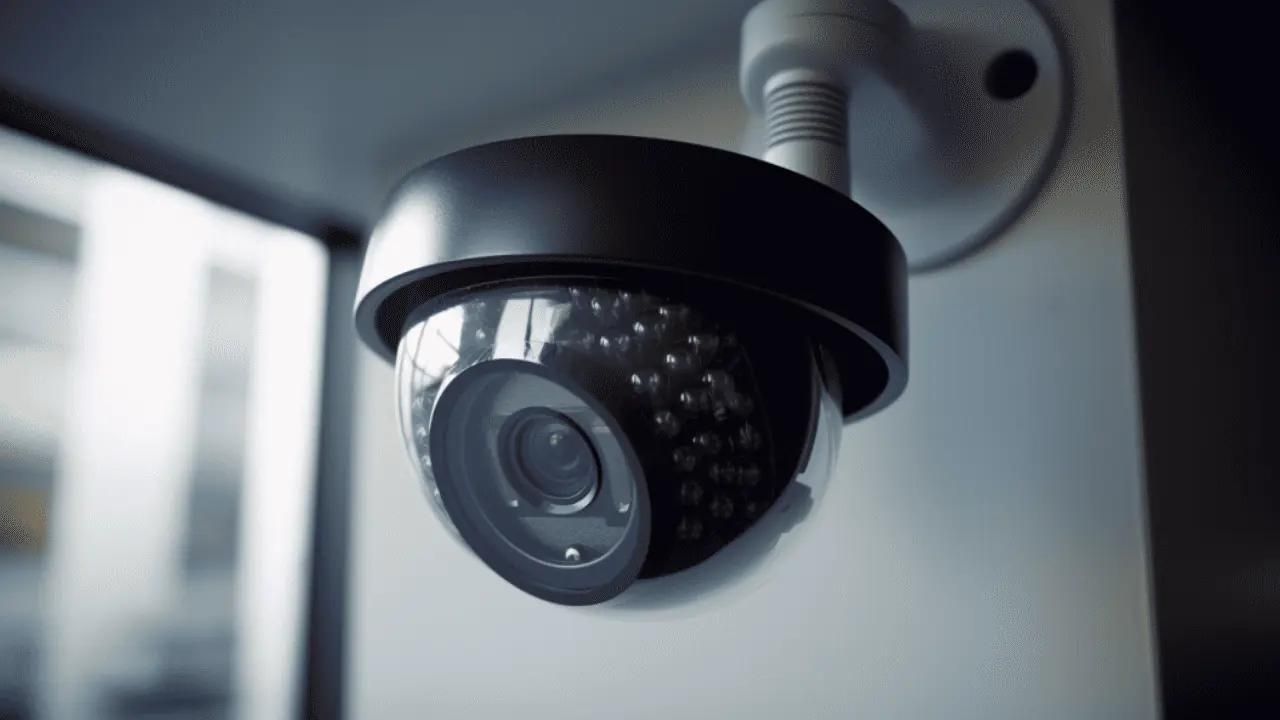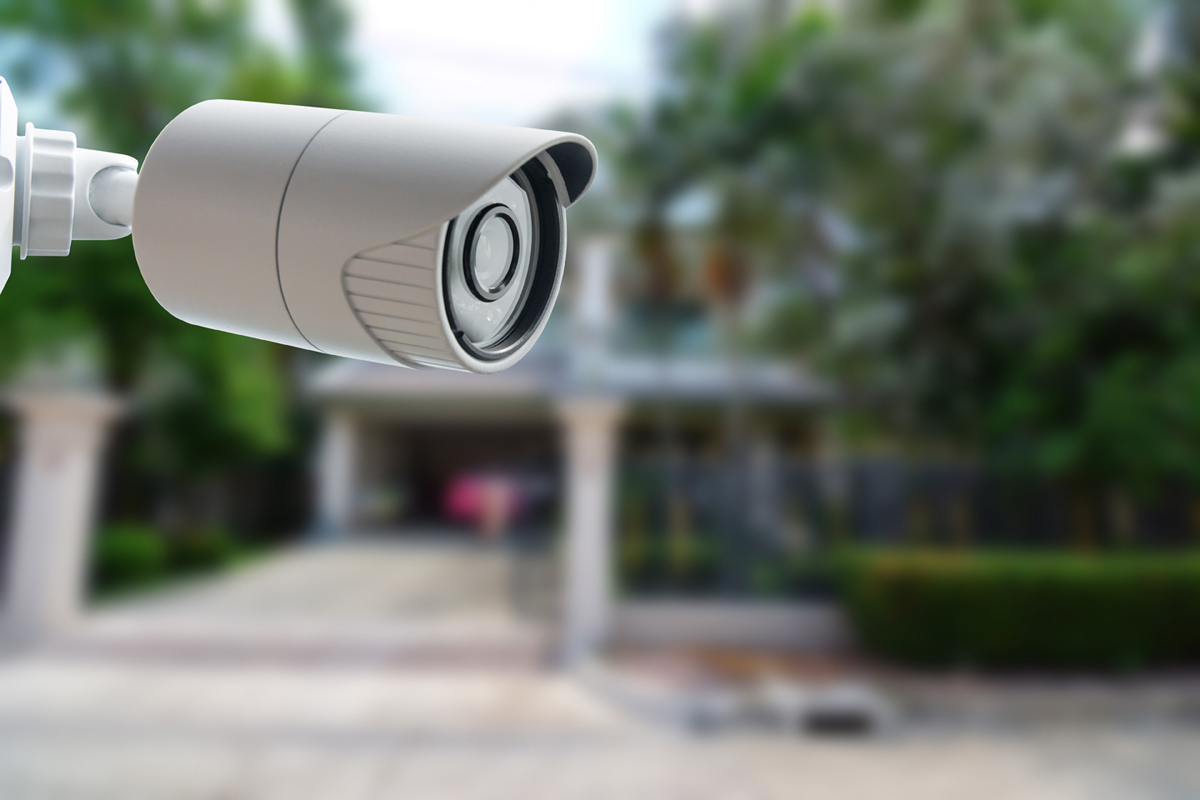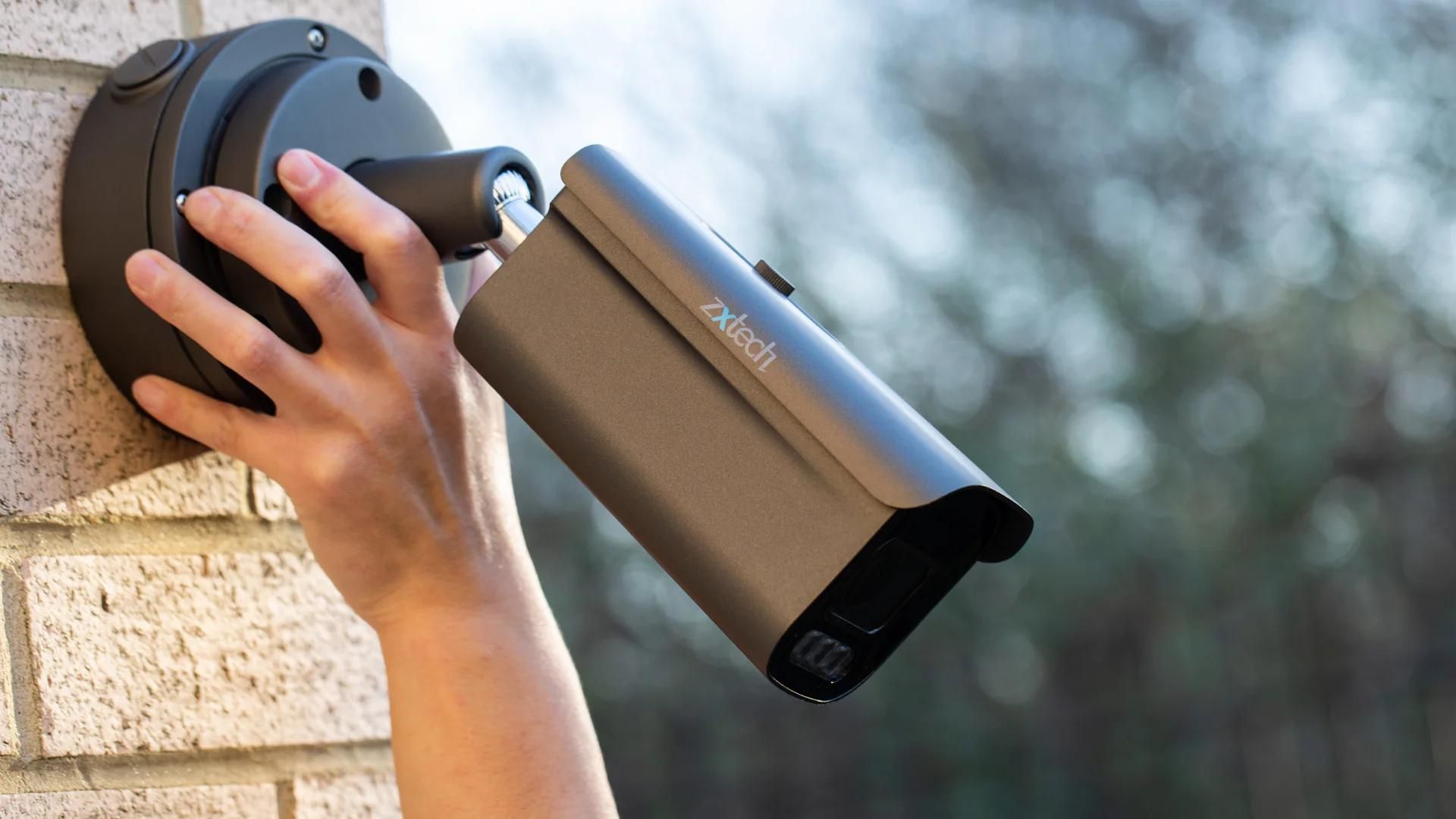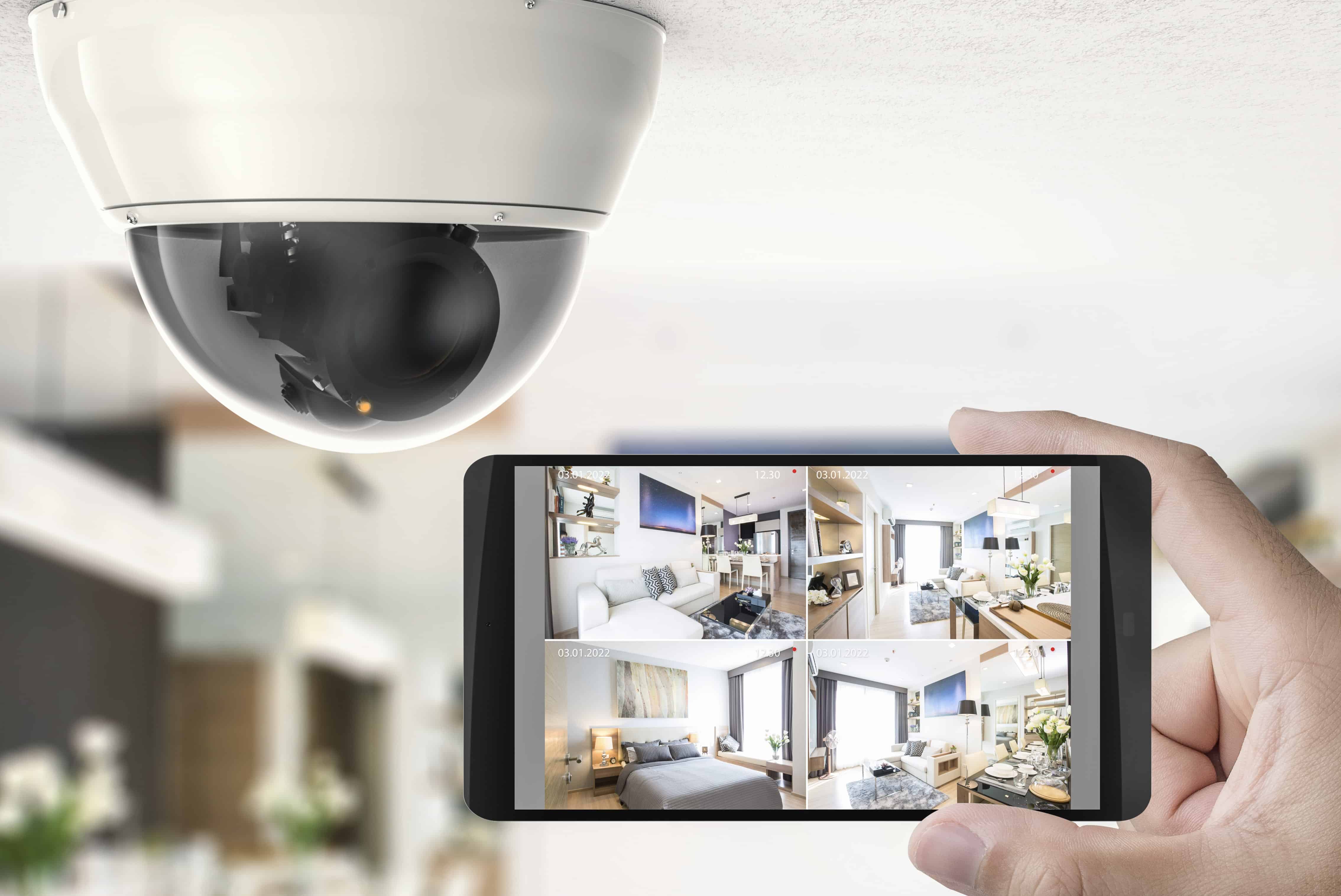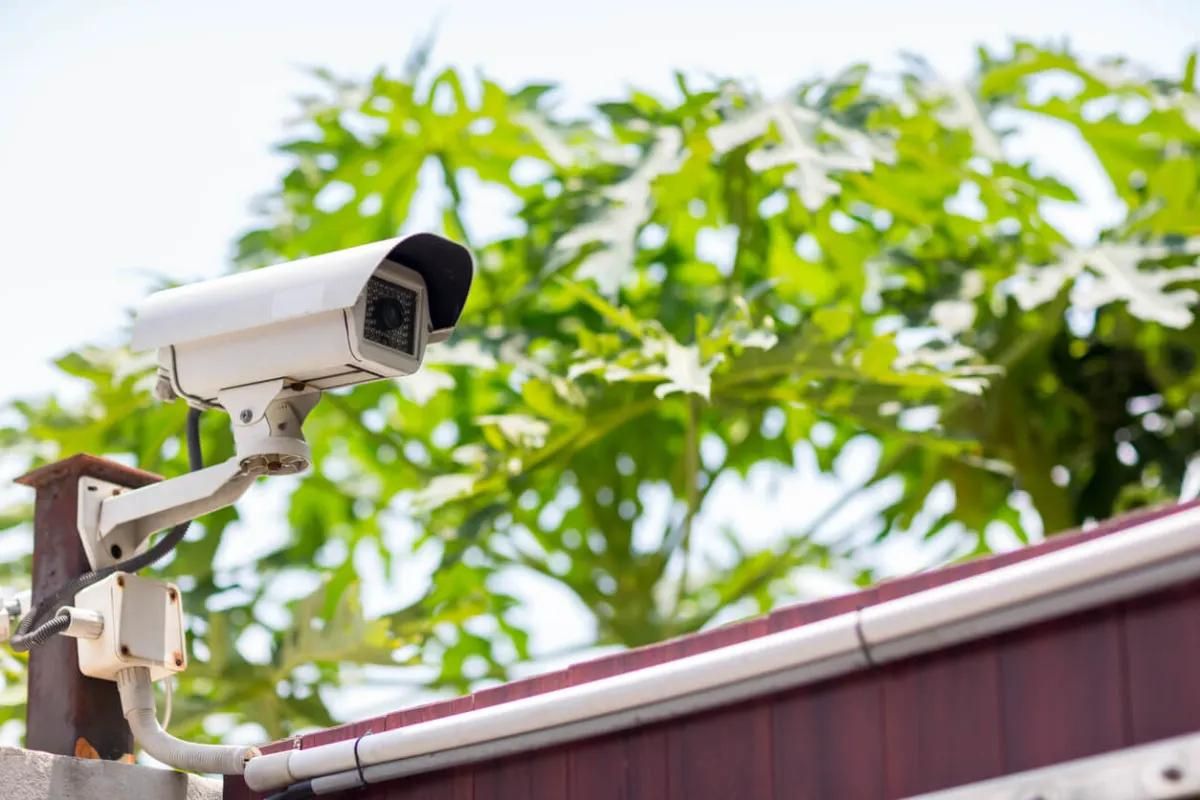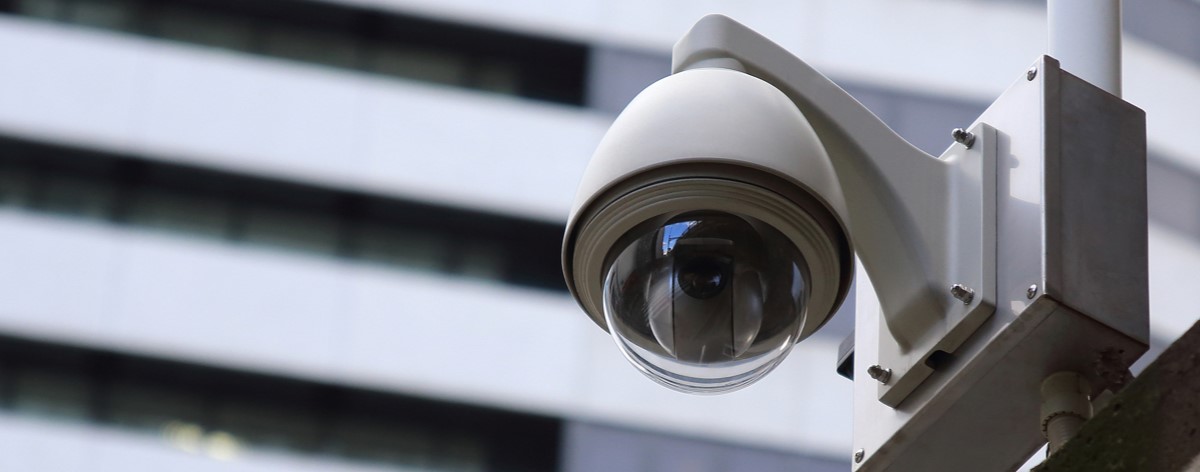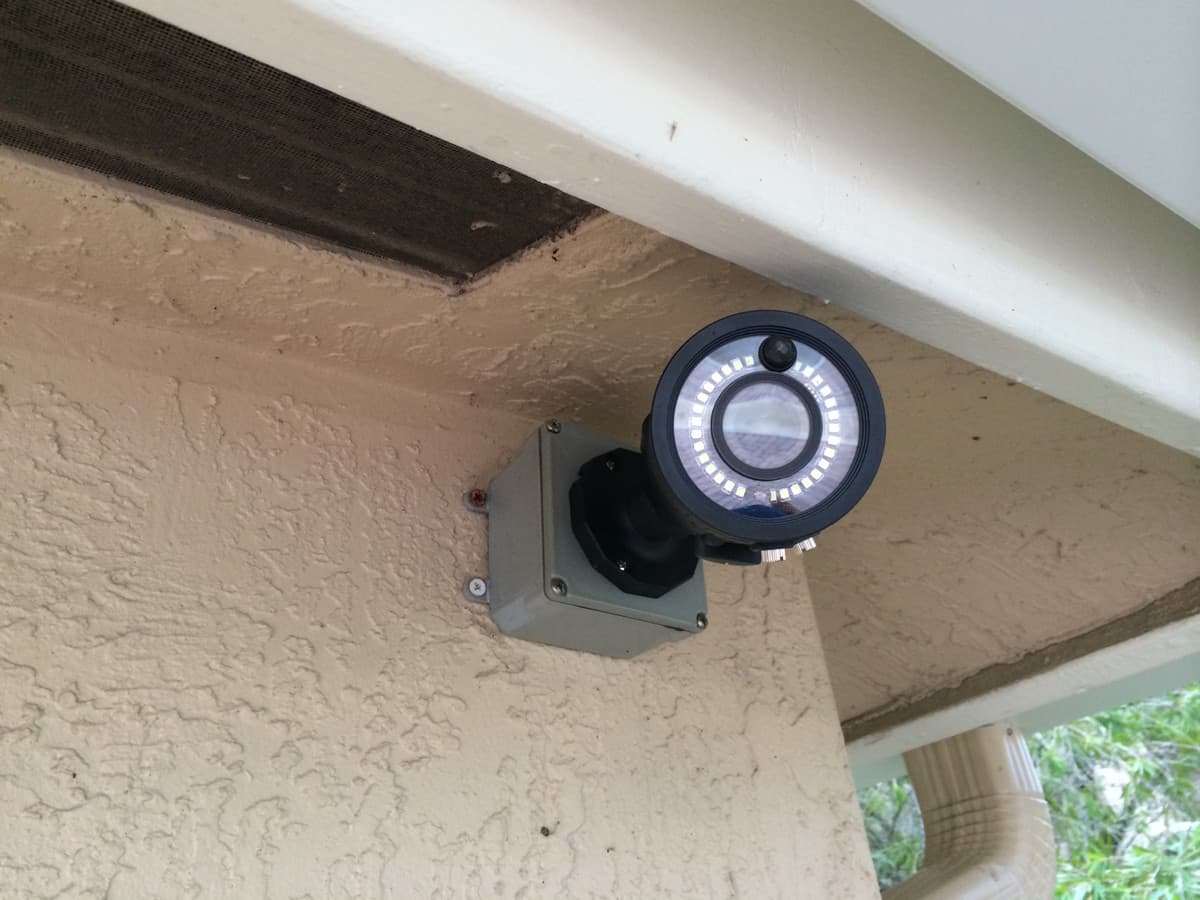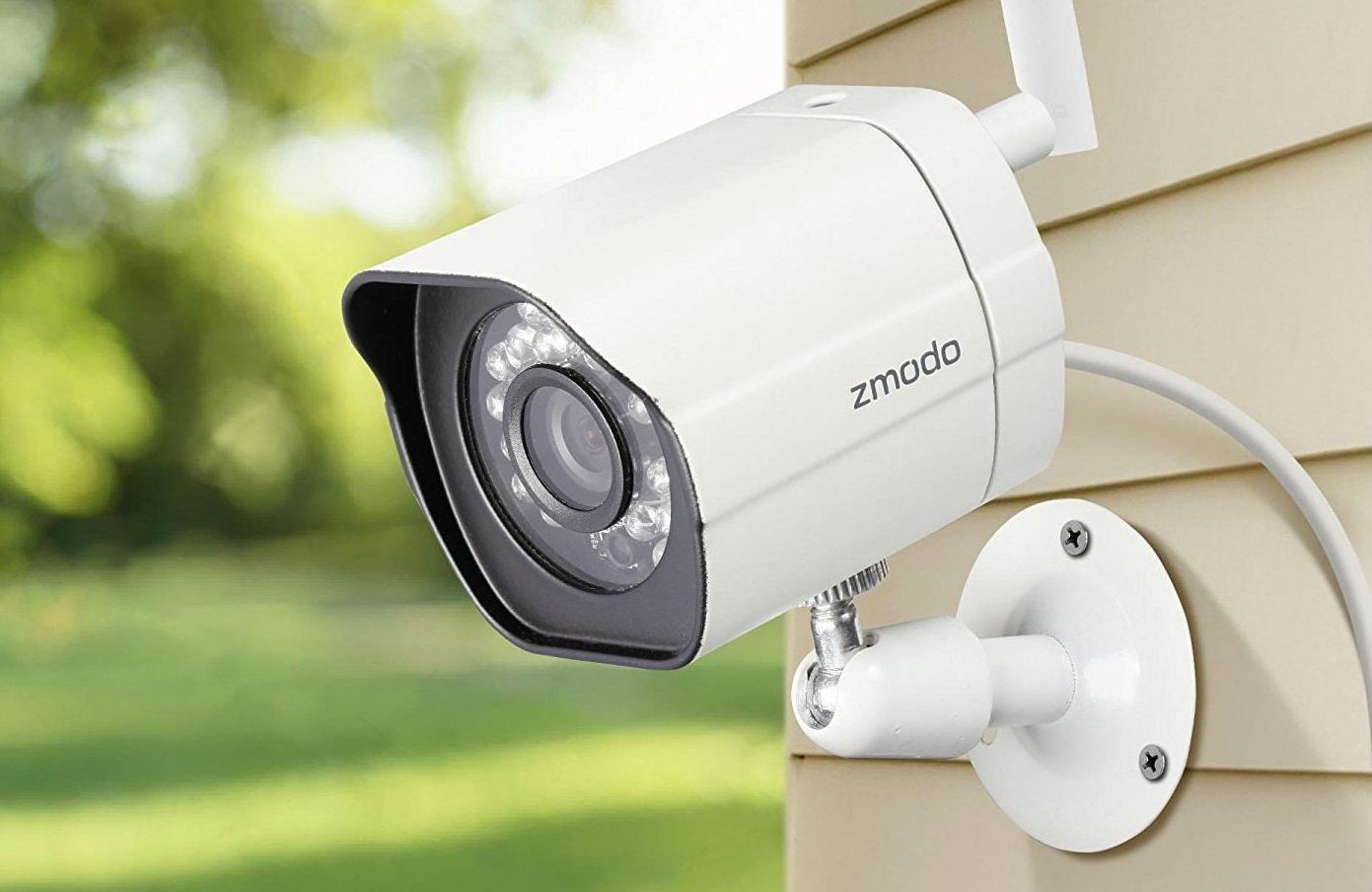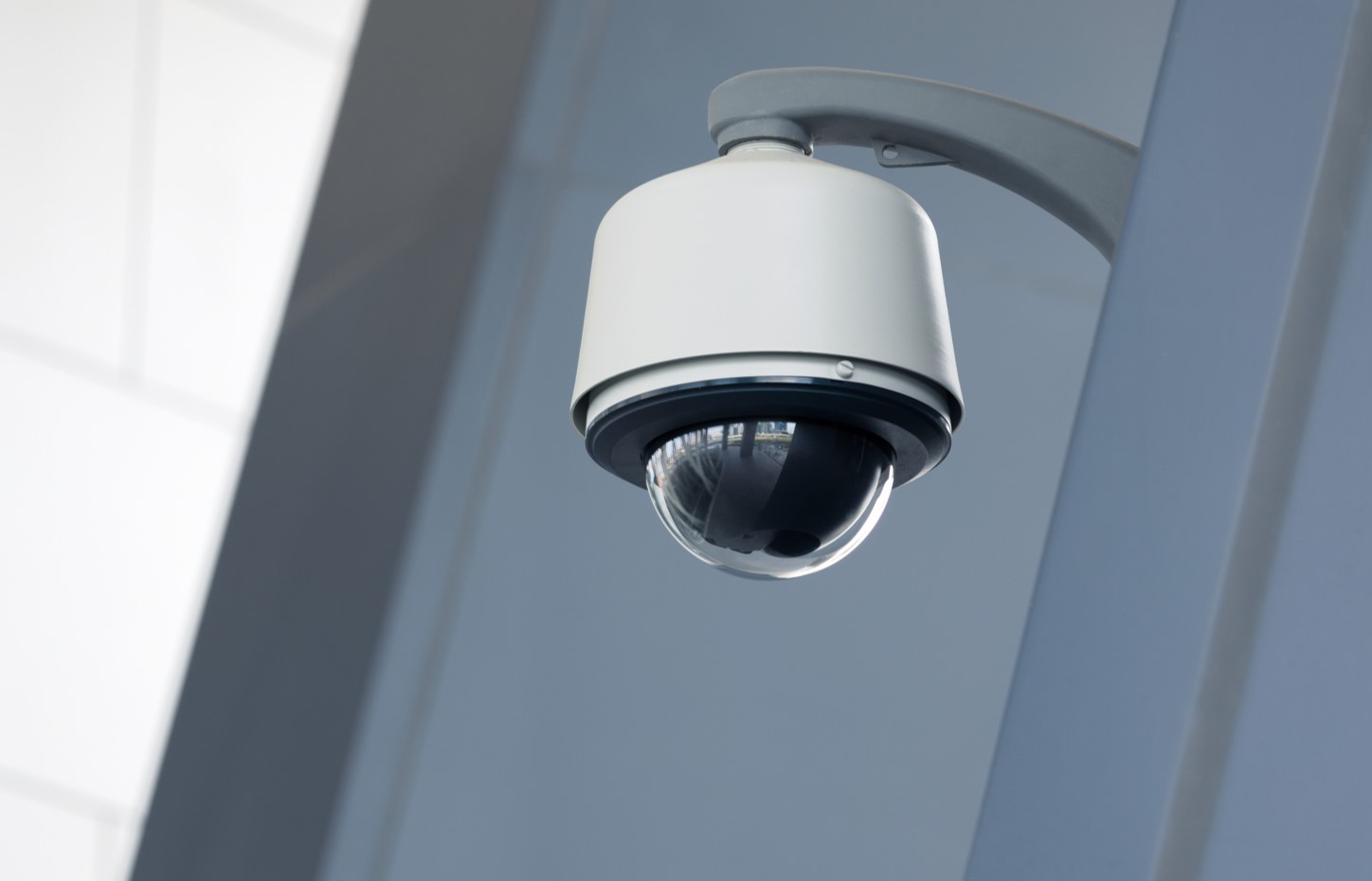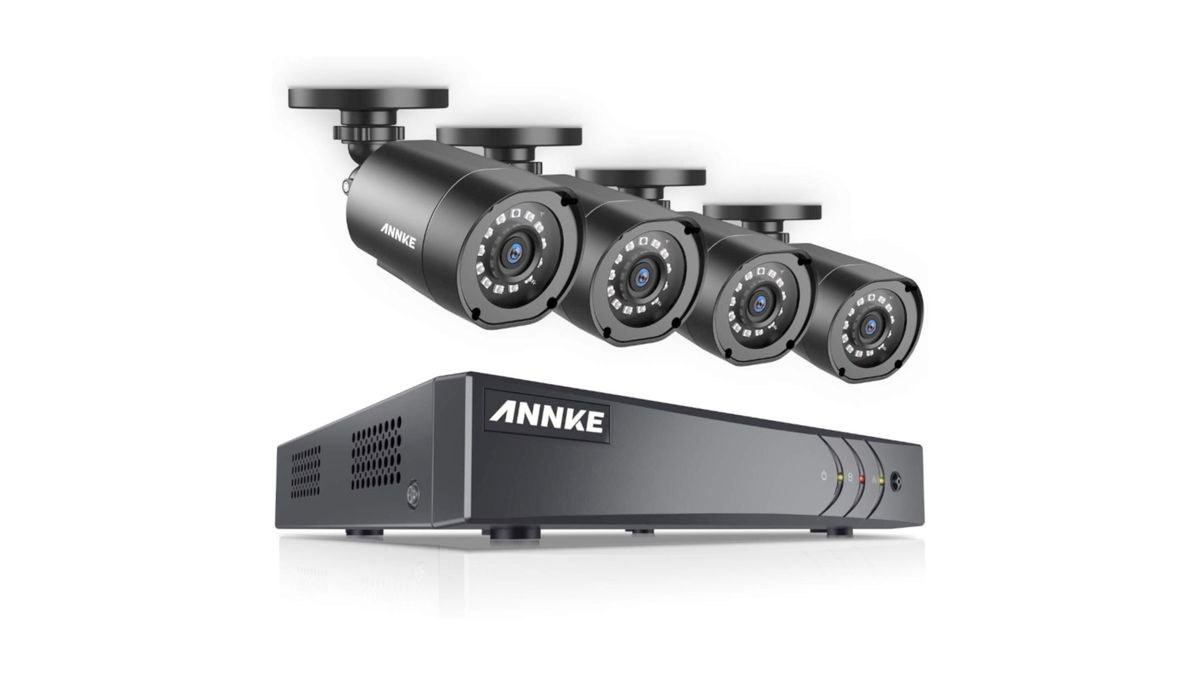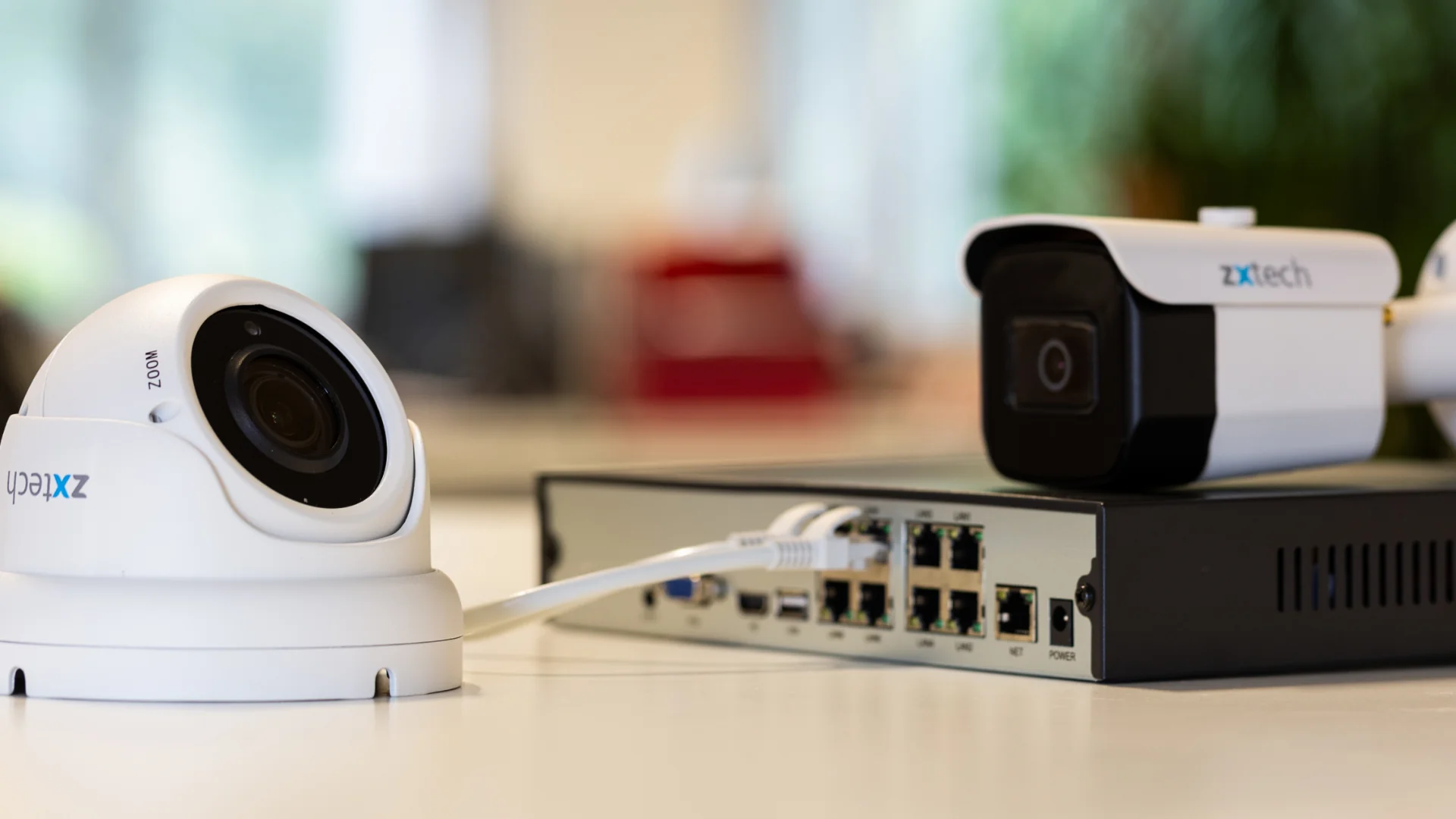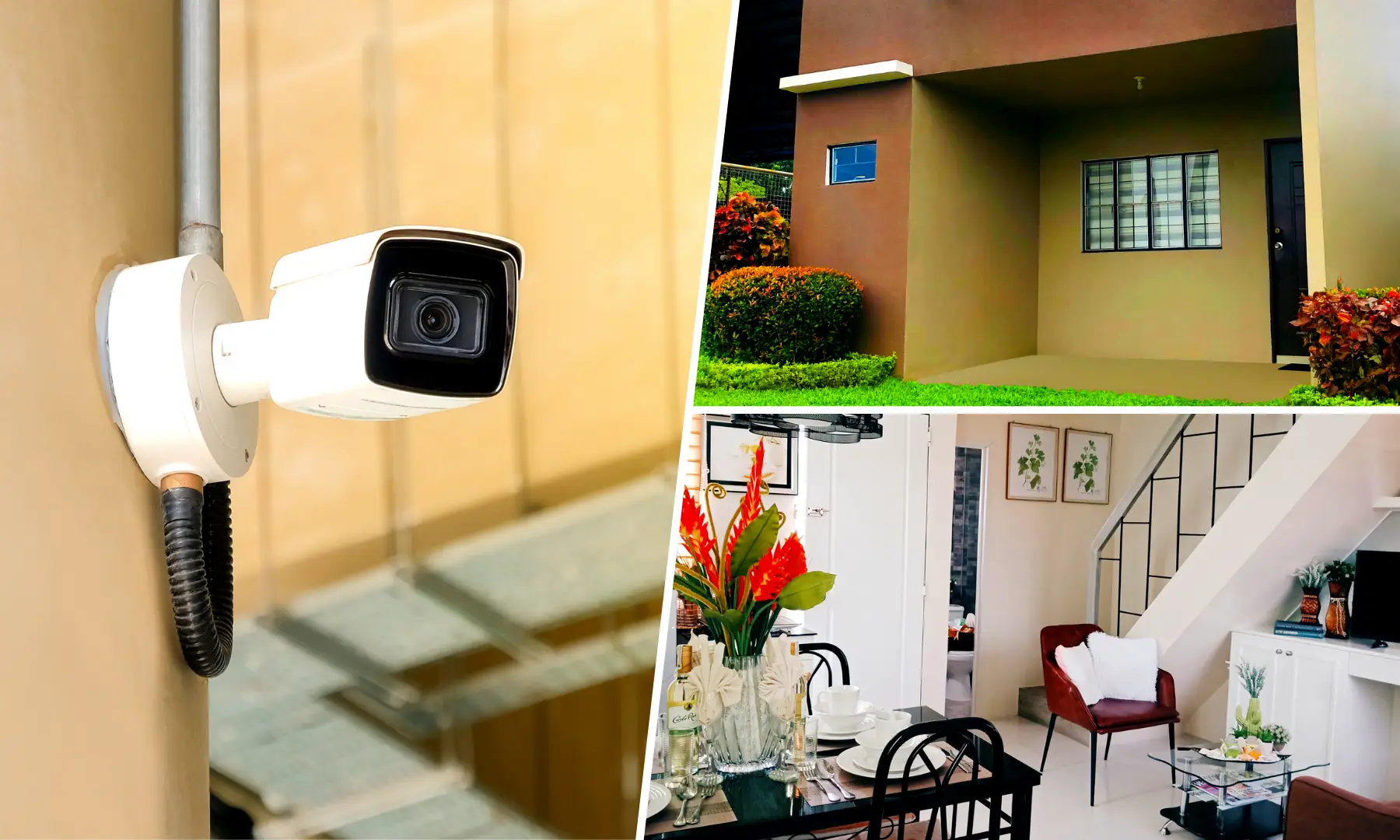Home>Home Security and Surveillance>What Is Security Camera
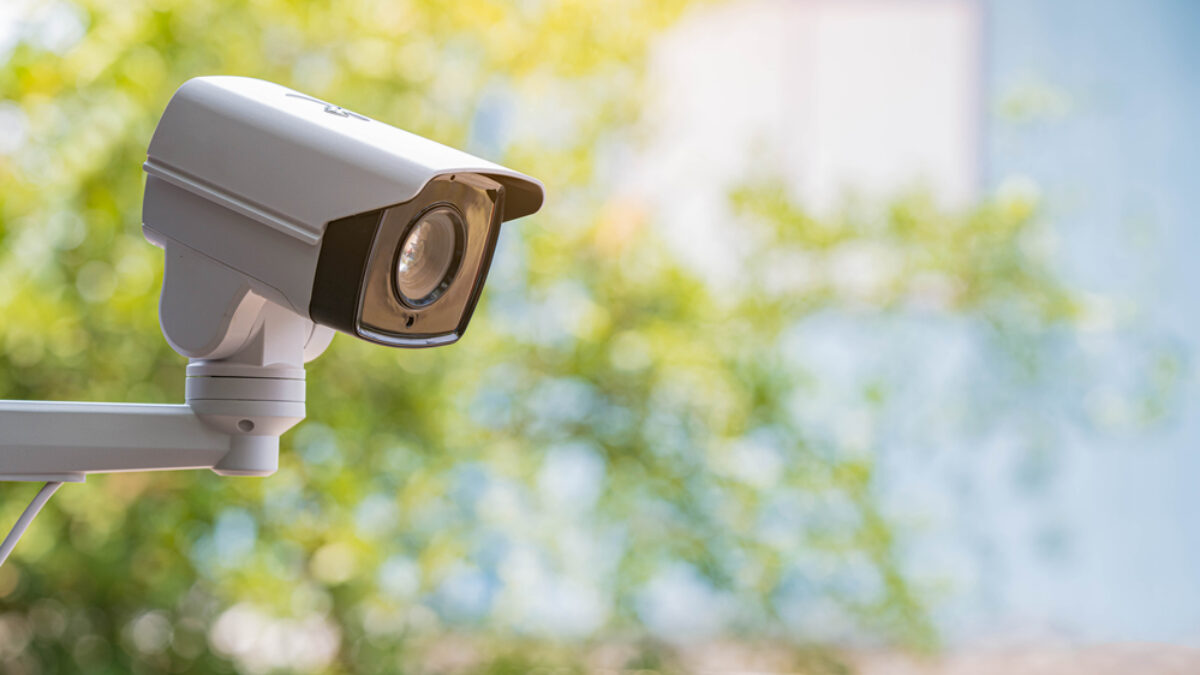

Home Security and Surveillance
What Is Security Camera
Modified: May 6, 2024
Learn about the importance of home security and surveillance with security cameras. Discover how they can protect your property and provide peace of mind.
(Many of the links in this article redirect to a specific reviewed product. Your purchase of these products through affiliate links helps to generate commission for Storables.com, at no extra cost. Learn more)
Introduction
Welcome to the world of home security and surveillance! In an era where safety and peace of mind are paramount, the need for effective security measures cannot be overstated. One of the most popular and reliable solutions is the installation of security cameras in and around your home. These devices not only act as a deterrent for potential intruders but also provide valuable evidence in case of any incidents, allowing homeowners to stay one step ahead of potential threats.
In this comprehensive guide, we will delve into the world of security cameras, exploring their various types, functionalities, benefits, and how to choose the best one for your specific needs. Whether you are a tech-savvy homeowner looking to upgrade your existing security system or a novice delving into the world of home security for the first time, this article will provide you with the necessary knowledge to make informed decisions.
Before we dive into the specifics, let’s start with the basics. What exactly is a security camera?
Key Takeaways:
- Security cameras are essential for home safety, deterring criminals, and providing evidence. Understanding laws and regulations is crucial for responsible and effective use.
- Choosing the right security camera, strategic placement, and regular maintenance are key to maximizing their benefits and ensuring a safe home environment.
Read more: What Are Security Cameras
Definition of Security Camera
A security camera, also known as a surveillance camera, is a device that captures and records video footage of a specific area. It is designed to monitor and provide visual information about activities that occur within its field of view. The footage from security cameras can be accessed in real-time or stored for future reference.
Security cameras are an integral part of home security systems, providing a layer of protection and surveillance to residential properties. They are typically mounted in strategic locations, such as entrances, driveways, hallways, or outdoor areas, to maximize their coverage and effectiveness.
These cameras use a variety of technologies to capture images and videos, including analog, digital, or IP (Internet Protocol) technology. Analog cameras capture and transmit videos in an analog format, while digital cameras convert video signals into digital data for transmission. IP cameras, on the other hand, use network connections to transmit video data over the internet or local network.
Modern security cameras are equipped with advanced features and capabilities, such as high-definition resolution, night vision, motion detection, and remote access. These features enhance their effectiveness in monitoring and recording activities, even in low-light conditions or areas with limited visibility.
Overall, the primary purpose of a security camera is to provide homeowners with a visual record of events and activities occurring in and around their property. This enables them to monitor their home remotely, deter potential criminals, and have evidence in case of any untoward incidents.
Types of Security Cameras
When it comes to security cameras, there is a wide range of options available, each with its own unique features and suitability for different surveillance needs. Let’s explore some of the most common types:
- Dome Cameras: As the name suggests, dome cameras are characterized by their dome-shaped design. They are often used in indoor settings, such as ceilings or walls, and are less intrusive due to their discreet appearance. Dome cameras offer a wide field of view and are ideal for monitoring large areas.
- Bullet Cameras: Bullet cameras are long and cylindrical, resembling a bullet. They are designed for both indoor and outdoor use and are known for their durability and weather resistance. Bullet cameras usually have a longer range, making them suitable for monitoring large outdoor spaces.
- PTZ Cameras: PTZ (Pan-Tilt-Zoom) cameras offer the ability to pan, tilt, and zoom, providing a more flexible surveillance experience. These cameras can be remotely controlled, allowing users to change the camera’s viewing angle and zoom in on specific areas of interest. PTZ cameras are commonly used in commercial settings where active surveillance is required.
- Wireless Cameras: Wireless cameras are a popular choice for homeowners due to their convenience and ease of installation. They operate via wireless network connections, eliminating the need for extensive wiring. These cameras can be easily mounted and offer flexibility in terms of placement options.
- IP Cameras: IP cameras, also known as network cameras, transmit video data over the internet or local network. They offer high-definition resolution and advanced features such as remote access and video analytics. IP cameras are suitable for both residential and commercial applications.
It’s important to consider your specific surveillance needs, the area you want to monitor, and any specific features you require when choosing the right type of security camera for your home. Keep in mind factors like image quality, field of view, low-light performance, and connectivity options to ensure you select the camera that meets your requirements.
How Security Cameras Work
Understanding how security cameras work is essential to make the most out of their capabilities. While the specific operation may vary depending on the camera type and model, the basic principles remain the same. Let’s take a closer look at the process:
1. Image Capture: Security cameras use a lens to focus on the area they are monitoring. The lens captures incoming light and forms an image on a sensor. The sensor can be either a charge-coupled device (CCD) or a complementary metal-oxide-semiconductor (CMOS) sensor.
2. Signal Processing: Once the image is captured, it goes through signal processing inside the camera. This includes converting the analog image into a digital format and applying various adjustments like color correction, noise reduction, and compression.
3. Video Transmission: After signal processing, the camera sends the video data to a recording device or a monitoring system via cables (for analog cameras) or through a network (for IP cameras). Wireless cameras transmit the video data wirelessly to a receiver or directly to the connected device.
4. Video Storage and Playback: The recorded video footage is stored in a storage device, such as an NVR (Network Video Recorder) or a DVR (Digital Video Recorder) for analog cameras. These devices allow you to store and access video recordings for future reference or playback.
5. Remote Access: Many modern security cameras provide the option of remote access. By connecting the camera to a network, homeowners can view the live footage or access the recorded videos from their smartphones, tablets, or computers, no matter where they are.
6. Power Source: Security cameras require a power source to operate. Some cameras are powered by traditional electrical outlets, while others use batteries or PoE (Power over Ethernet) technology, which allows power and data transmission through a single Ethernet cable.
It’s important to note that security cameras can come with additional features such as motion detection sensors, infrared LEDs for night vision, two-way audio capabilities, and integration with smart home devices. These features enhance the functionality and effectiveness of security cameras in monitoring and capturing events.
By understanding the inner workings of security cameras, you can make informed decisions and harness their capabilities to create a safer and more secure environment for your home.
Benefits of Security Cameras
Security cameras offer a multitude of benefits that contribute to the overall safety and security of your home. Let’s explore some of the key advantages of having security cameras installed:
- Crime Deterrence: One of the primary benefits of security cameras is their deterrence factor. Visible cameras act as a powerful deterrent for potential criminals, discouraging them from targeting your property. The presence of security cameras can significantly reduce the risk of break-ins, theft, vandalism, and other criminal activities.
- Evidence and Documentation: In the unfortunate event of a crime or incident, security cameras provide valuable evidence that can assist law enforcement agencies in identifying and apprehending the perpetrators. In addition, recorded footage can serve as crucial documentation for insurance claims or legal proceedings.
- Remote Monitoring: Modern security cameras offer the convenience of remote monitoring. This means that you can view live footage or access recorded videos from anywhere through a smartphone, tablet, or computer. Remote monitoring allows you to keep an eye on your property even when you’re away, providing peace of mind and reassurance.
- Home Automation Integration: Many security cameras can be integrated into your home automation system, allowing you to create a smart security ecosystem. You can link your cameras with other devices, such as motion sensors or smart door locks, to automate and enhance your home’s security capabilities.
- Child and Pet Monitoring: Security cameras are not only useful for deterring criminals but also for ensuring the safety and well-being of your loved ones. With security cameras installed, you can monitor your children or pets remotely, ensuring their safety and providing you with peace of mind.
- Insurance Premium Discounts: Installing security cameras can lead to potential savings on your home insurance premiums. Many insurance providers offer discounts to homeowners who have security systems in place, as it reduces the risk of theft and property damage.
- Peace of Mind: Ultimately, one of the most significant benefits of security cameras is the peace of mind they offer. Knowing that your property is under constant surveillance provides a sense of security and allows you to feel more at ease, whether you’re at home or away.
By investing in security cameras, you can enjoy these benefits and create a safer environment for your home and loved ones. It’s important to choose cameras that suit your specific needs and install them strategically to maximize their effectiveness.
Read more: What Is A Ring Security Camera
Common Features of Security Cameras
Security cameras come equipped with various features and functionalities designed to enhance their effectiveness and usability. While the specific features may vary depending on the camera model and manufacturer, here are some common features to look out for:
- High-Definition Resolution: Many security cameras now offer high-definition (HD) resolution, which ensures clear and detailed video footage. Look for cameras with a resolution of 1080p or higher to capture crisp images.
- Night Vision: Night vision capability is crucial for surveillance cameras, as criminal activities often occur under the cover of darkness. Look for cameras equipped with infrared (IR) LEDs that provide clear and illuminated footage even in low-light conditions.
- Motion Detection: Cameras with motion detection sensors can detect any movement within their field of view. When motion is detected, these cameras will send alerts to your mobile device or trigger recording, allowing you to stay informed of any potential threats.
- Two-Way Audio: Some security cameras feature built-in microphones and speakers that enable two-way audio communication. This allows you to communicate with individuals near the camera, making it useful for monitoring entrances or speaking to delivery personnel.
- Wide-Angle Lens: Cameras with a wide-angle lens provide a broader field of view, allowing you to monitor a larger area with a single camera. Look for cameras with a wide-angle lens to cover more ground and reduce blind spots.
- Remote Access: The ability to access your camera’s live feed and recorded videos remotely is a key feature. Look for cameras that offer mobile apps or web-based access, allowing you to view your camera’s footage from anywhere using your smartphone, tablet, or computer.
- Cloud Storage: Some cameras offer cloud storage options, allowing you to store video recordings in a secure online storage space. Cloud storage provides an additional level of protection in case the camera or local storage device is tampered with or damaged.
- Smart Home Integration: If you have a smart home automation system, consider cameras that are compatible with popular smart home platforms like Amazon Alexa, Google Assistant, or Apple HomeKit. This integration allows you to control and monitor your cameras alongside other connected devices.
- Weather Resistance: For outdoor security cameras, it’s important to ensure they have sufficient weather resistance to withstand the elements. Look for cameras with an IP65 or higher rating, indicating their resistance to dust and water.
Consider your specific needs and the environment where the cameras will be installed when selecting the features that are most important to you. It’s worth noting that more advanced features may come at a higher cost, so prioritize those that align with your surveillance requirements.
When choosing a security camera, consider factors such as resolution, night vision, motion detection, and remote access. These features can help ensure that your property is well-protected.
Factors to Consider When Choosing a Security Camera
Choosing the right security camera for your specific needs requires careful consideration of various factors. With a wide range of options available, it’s important to assess the following elements before making a decision:
- Indoor or Outdoor Use: Determine whether you need a camera for indoor monitoring or outdoor surveillance. Outdoor cameras need to be weatherproof and have sufficient durability to withstand harsh conditions, while indoor cameras may focus more on features like two-way audio and discreet design.
- Resolution: Consider the desired level of clarity you need in your video footage. High-definition resolution (1080p or higher) is recommended for capturing clear and detailed images.
- Field of View: Assess the area you want to monitor and choose a camera with an appropriate field of view. Cameras with a wide-angle lens or pan-tilt-zoom (PTZ) capabilities allow for wider coverage and potential adjustment of the viewing angle.
- Connectivity: Determine how you want the camera to connect to your network. Wireless cameras offer more flexibility in terms of installation, while wired cameras may provide a more stable and reliable connection.
- Storage Options: Consider how you want to store your video footage. Options include local storage on an NVR (Network Video Recorder) or DVR (Digital Video Recorder), or cloud storage services provided by the camera manufacturer.
- Budget: Set a budget for your security camera system, taking into account the number of cameras needed and any additional features you require. Strike a balance between cost and the functionality you desire.
- Power Source: Determine whether you prefer cameras powered by electrical outlets, batteries, or PoE (Power over Ethernet) technology. Ensure that your chosen power source aligns with your installation requirements.
- Remote Access and Mobile App: Consider if remote access is important to you. Look for cameras that offer mobile apps or web-based access, allowing you to view live footage and recorded videos conveniently from your smartphone, tablet, or computer.
- Security and Privacy: Ensure that the chosen camera has strong security features, including encryption and secure login credentials, to protect your video streams and prevent unauthorized access.
- Customer Reviews and Reputation: Read customer reviews and research the reputation of different camera brands and models. Pay attention to factors like reliability, customer support, and overall user satisfaction.
By carefully considering these factors, you can make an informed decision and choose a security camera that suits your specific needs and provides the necessary functionality to enhance your home security system.
Installation and Placement of Security Cameras
The installation and placement of security cameras play a crucial role in their effectiveness and the overall security of your home. Consider the following tips when setting up your security camera system:
- Strategic Placement: Identify the areas of your property that require monitoring, such as entrances, windows, driveways, and backyard. Place cameras in strategic locations to maximize their coverage and capture critical areas.
- Vantage Points: Position cameras at vantage points that provide an optimal view of the area you want to monitor. Avoid placing cameras too high or too low, as this may affect their effectiveness in capturing clear images.
- Coverage Overlaps: Ensure there are no blind spots in your camera’s field of view. Consider overlapping coverage between cameras to eliminate any gaps in surveillance and capture a comprehensive view of the monitored area.
- Focus on Entry Points: Pay special attention to entry points such as doors and windows, as these are vulnerable areas for potential break-ins. Install cameras to cover these points and capture any suspicious activity.
- Indoor and Outdoor Cameras: Choose cameras specifically designed for indoor or outdoor use, depending on your monitoring needs. Outdoor cameras should be weatherproof and designed to withstand harsh environmental conditions.
- Proper Mounting: Ensure that cameras are securely mounted to walls, ceilings, or other appropriate surfaces. Make sure the mounting brackets are stable and can support the weight of the camera.
- Consider Privacy: Be mindful of your neighbors’ privacy when placing cameras. Avoid pointing cameras directly into neighboring properties or areas where privacy is expected.
- Camera Height: Place cameras at an appropriate height to capture the desired area without obstruction. Generally, a height of 9 to 10 feet above the ground is recommended for outdoor cameras.
- Cable Management: If using wired cameras, plan for cable management to ensure a clean and organized installation. Conceal cables behind walls, use cable covers, or route them through conduit to keep them protected and hidden from view.
- Test and Adjust: After installation, test the cameras to ensure they are capturing the desired view and are properly aligned. Make any necessary adjustments to the angle or position to optimize their effectiveness.
If you are unsure about the installation and setup process, it is recommended to consult a professional or seek guidance from the camera manufacturer. Proper installation and placement of security cameras can significantly enhance their effectiveness in safeguarding your home and providing valuable surveillance footage.
Maintenance and Troubleshooting of Security Cameras
Maintaining the proper functioning of your security cameras is essential to ensure they continue to provide effective surveillance. Here are some maintenance tips and troubleshooting steps to keep your security cameras in top shape:
Maintenance Tips:
- Regular Cleaning: Dust, dirt, and debris can accumulate on camera lenses, affecting video quality. Clean lenses periodically using a soft, lint-free cloth to maintain clear images.
- Check Power and Connections: Ensure that the power supply and cables are properly connected and functioning. Check for any loose connections or damaged cables that may interfere with the camera’s performance.
- Inspect Camera Housing: For outdoor cameras, inspect the housing for any signs of damage or wear. Ensure that the housing provides adequate protection against weather conditions and tampering.
- Update Firmware: Regularly check for firmware updates from the camera manufacturer and apply them as recommended. Firmware updates often include bug fixes, security patches, and improved functionality.
- Test Night Vision: Periodically test the night vision functionality of your cameras to ensure that the infrared LEDs are working properly. Adjust the sensitivity settings if necessary for optimal performance in low-light conditions.
- Review Storage Capacity: Monitor the storage capacity of your recording device, whether it’s an NVR, DVR, or cloud storage service. Delete unnecessary footage or consider expanding storage if needed.
Troubleshooting Steps:
- No Power: If your camera isn’t powering on, check the power supply and connections. Test the outlet or power source with another device to ensure it’s functioning properly.
- Poor Image Quality: If the video quality is degraded, clean the camera lens and check for any obstructions. Adjust the focus and angle if necessary. Also, evaluate the lighting conditions and make adjustments to optimize image quality.
- Connection Issues: If you’re experiencing connection problems or remote access issues, check your network settings and ensure the camera is connected to the correct Wi-Fi network. Restart your router or try resetting the camera if needed.
- False Alarms: If your cameras are triggering false motion detection alerts, adjust the sensitivity settings and ensure that objects like plants or moving branches are not triggering unnecessary alerts.
- Camera Offline: If a camera appears offline, power cycle the camera and check the network connection. Verify that the camera is connected to the network and has a stable internet connection.
- Audio Issues: If you’re experiencing problems with the camera’s audio, check the microphone and speaker connections. Adjust the volume settings on both the camera and the viewing device.
- Consult Manufacturer Support: If issues persist or are beyond your troubleshooting capabilities, contact the manufacturer’s customer support for further assistance. They can guide you through specific troubleshooting steps or offer repair or replacement options.
Regular maintenance and troubleshooting help ensure your security cameras operate optimally, providing reliable surveillance for your home. Be proactive in addressing any issues to maintain the effectiveness and performance of your camera system.
Read more: What Is A Dome Security Camera
Laws and Regulations Regarding Security Cameras
When installing and using security cameras, it’s important to be aware of the laws and regulations that govern their use. These laws vary by jurisdiction and may cover areas such as privacy, video surveillance, and data protection. Here are some general considerations:
- Consent and Privacy: In most jurisdictions, it is essential to obtain the consent of individuals who may be captured by your security cameras. This typically applies to areas where there is a reasonable expectation of privacy, such as bathrooms or bedrooms. Ensure that your cameras are focused on public areas or areas within your property where privacy is not expected.
- Notification: Some jurisdictions require homeowners to prominently display signs or stickers indicating that surveillance cameras are in use on their premises. This notifies individuals that they may be recorded, even if they are not specifically asked for consent.
- Data Protection: Be mindful of data protection regulations, especially if your cameras capture and store footage that includes personal information. Take steps to secure and protect the recorded data to prevent unauthorized access or use.
- Audio Recording: Check the laws regarding audio recording in your jurisdiction, as some places require the consent of all parties involved to record audio conversations. If your security camera system includes audio recording capabilities, ensure compliance with applicable laws.
- Public Spaces: When installing cameras in public spaces or shared areas, it’s important to understand any local restrictions or permits that may be required. Consult with local authorities to ensure compliance with regulations governing public surveillance.
- Employer and Employee Monitoring: If you’re installing security cameras in a workplace, special laws may apply to employee monitoring. Be aware of any employment laws or regulations that govern the use of surveillance cameras in the workplace.
- Retention Period: Familiarize yourself with regulations regarding the retention period for recorded footage. Some jurisdictions may have specific requirements for how long video recordings can be stored.
- Data Sharing: If you share recorded footage with law enforcement or other parties, ensure that you comply with applicable regulations and seek legal advice if necessary.
- Local Regulations: Laws and regulations can vary between cities, states, and countries. Research and understand the specific regulations that apply to your location to ensure compliance with all applicable laws.
It’s important to consult legal professionals or regulatory authorities to understand the specific laws and regulations that apply to your situation. Compliance with these laws ensures that you use your security cameras responsibly and within the boundaries of the law, protecting the rights and privacy of individuals while maintaining security.
Conclusion
Security cameras provide an invaluable layer of protection and surveillance for homeowners. By capturing and recording video footage, these cameras act as a deterrent to potential intruders and provide valuable evidence in the event of criminal activities or incidents. In this comprehensive guide, we explored various aspects of security cameras, from their definition and types to their installation, maintenance, and compliance with laws and regulations.
We discussed the different types of security cameras available, including dome cameras, bullet cameras, PTZ cameras, wireless cameras, and IP cameras. Each type offers unique features and functionalities to suit different surveillance needs.
To ensure optimal performance, we discussed the importance of strategic camera placement, proper installation, and regular maintenance. We also covered troubleshooting steps for common issues that may arise during the use of security cameras.
Understanding and complying with the laws and regulations governing the use of security cameras is crucial. Privacy, consent, data protection, and notification requirements may vary by jurisdiction, so it’s essential to be aware of and abide by the applicable laws to protect the privacy rights of individuals.
Security cameras offer numerous benefits, such as deterring criminal activities, providing evidence, enabling remote monitoring, and enhancing the safety of your loved ones. However, it’s important to carefully consider factors like resolution, field of view, connectivity options, and budget before selecting the right camera for your specific needs.
In conclusion, security cameras are a valuable investment for homeowners seeking peace of mind and an added level of security. By choosing the right cameras, installing them strategically, and adhering to legal requirements, you can create a safe environment for your home and loved ones. Regular maintenance and troubleshooting ensure that your security camera system operates effectively and provides dependable surveillance. Stay informed, make educated choices, and enjoy the benefits that security cameras bring to your home security system.
Now that you've got a solid grasp on security cameras, why stop there? If peace of mind is what you're after, discovering why robust home security is indispensable could be your next step. For those who love staying ahead of technology trends, getting a sneak peek at the smart home technology set to redefine daily living in 2024 could be equally thrilling. Both guides are packed with insights and practical tips, ready to help you safeguard your home and streamline your life with cutting-edge technology. Don't miss out!
Frequently Asked Questions about What Is Security Camera
Was this page helpful?
At Storables.com, we guarantee accurate and reliable information. Our content, validated by Expert Board Contributors, is crafted following stringent Editorial Policies. We're committed to providing you with well-researched, expert-backed insights for all your informational needs.
